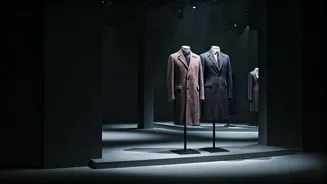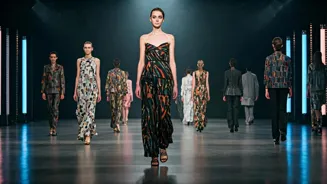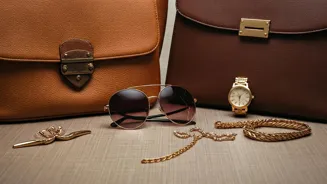Fashion's Historical Roots
Fashion's narrative is intricately woven into the fabric of human history, mirroring societal shifts and cultural transformations. Examining the past reveals
how clothing served as a symbol of status, a marker of identity, and a form of artistic expression. Ancient civilizations, like Egypt and Rome, had distinct styles that reflected their values and the resources they had access to. The Renaissance brought a renewed interest in art and beauty, influencing fashion with elaborate designs and luxurious fabrics. The Industrial Revolution spurred mass production, making clothing more accessible while also changing the concept of garment creation. The early 20th century saw the birth of haute couture, as designers like Coco Chanel revolutionized fashion with modern and practical styles that empowered women. Throughout these times, fashion served as a mirror reflecting not just what people wore but also how they lived, thought, and perceived the world around them.
Current Trend Dynamics
Current fashion trends are a product of many influences that include social media, celebrity endorsements, and global events. The rapid spread of information through online platforms has amplified trends, with looks quickly appearing worldwide. High-profile figures are frequently followed, and their fashion choices can affect the fashion marketplace. Sustainability has become increasingly important, driving demands for eco-friendly materials and ethical production methods. The fusion of diverse cultures continues to impact fashion, resulting in unique and hybrid aesthetics. Furthermore, the rise of streetwear and athleisure is blurring the boundaries between casual and high-end fashion. Trends are more cyclical, with elements from past eras often being refreshed and reinterpreted. The fashion landscape is always changing, reflecting a dynamic interplay of creativity, social attitudes, and technological advancements.
Key Style Elements
The styles and aesthetics that characterize fashion come down to the key elements of color, silhouette, and fabric. Color can evoke feelings and make an individual statement. Bold hues often stand out in streetwear and are an attention-grabber, while neutral palettes convey refinement and versatility. Silhouettes define the shape of clothing and can change the entire look of an outfit. From the clean lines of minimalist design to the billowing forms of bohemian attire, shapes help communicate a particular style. The choice of fabric is essential, affecting everything from comfort and drape to the perceived value of a garment. Luxury fabrics such as silk and cashmere enhance elegance, while the durability of denim and the comfort of cotton are essential for everyday wear. Understanding these elements allows individuals to customize their wardrobe and discover their personal fashion preferences.
Impact of Influencers
Influencers have altered the fashion industry, playing key roles in creating and disseminating trends. Social media platforms give influencers immediate access to a wide audience. This allows them to shape customer preferences and influence purchasing choices. Celebrities and fashion bloggers often work with brands to market products, expanding the reach of the products. The rise of visual-based platforms like Instagram and TikTok has made it easier to display and advertise new trends, thereby increasing consumer engagement. These factors have contributed to the way trends develop. Influencer marketing also highlights the significance of transparency and originality. When influencers endorse products and engage their audience, this creates a more interactive environment. The industry continues to change as the influence of these online personalities grows.
Fashion and Sustainability
Sustainability is now a key factor in the fashion industry, promoting a shift toward ethical consumption and eco-friendly practices. The rise of 'fast fashion' has prompted environmental and social issues, which are now being met with a focus on reducing waste, decreasing water usage, and minimizing carbon emissions. Brands are increasingly investing in recycled and organic materials. Sustainable fashion embraces fair labor practices. It supports supply chains that ensure fair treatment and compensation for workers. The concept of slow fashion encourages consumers to invest in quality pieces designed for longevity. Education and awareness efforts are being made to inform consumers about the effect of their purchasing decisions. Fashion brands are implementing innovative strategies such as rental services and clothing swaps. These initiatives are transforming how consumers view and engage with fashion, promoting a more responsible and circular economy.






